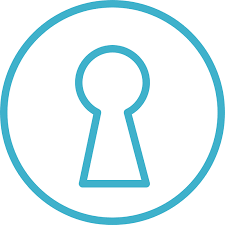Our number one aim at DollarSprout would be to help readers improve their financial lives, and we regularly associate with companies that share that same vision. If buy or signup is created via our Partners’ links, we get compensation for the referral. Here is how we earn money.
An individual retirement account, or IRA, comes with some significant tax advantages.
Many men and women start an IRA along with their employer-sponsored 401(k) as yet another tool to grow their post-employment nest egg.
If you’re already maxing out the employer game on your 401(k), or if your employer does not offer a 401(k), then an IRA might be the next best choice to save for retirement.
It can sound complicated if you have never done it earlier, but don’t let the acronyms and corporate terminology fool you. Launching an IRA is straightforward.
How to Open an IRA
Contents
First, choose which type of IRA you want to open. Then pick between a broker or robot adviser and choose your IRA provider. From that point, open your account and start saving.
- Choose Which Sort of IRA you need
It’s simple to open an IRA, but you should first choose the best IRA kind for you.
The biggest difference between a Roth and a traditional IRA is how the government treats withdrawals and contributions for tax purposes. Contributions are cash that you put in the IRA, and withdrawals are cash you take from the IRA when you need it.
When you donate to a traditional IRA, the contributions are tax-deductible so long as you fulfill specific standards. On the flip side, withdrawals from your IRA are taxable. That means when you retire and take cash from your traditional IRA, you are going to have to declare it as income on your taxes.
If you have a Roth IRA, the contributions are not tax-deductible. But you won’t be taxed on qualified withdrawals out of the Roth IRA.
A Roth IRA permits you to contribute at any age but imposes income restrictions on contributions.
Both Roth and traditional IRAs allow you to withdraw cash anytime but inflict a 10% penalty if you withdraw before age 59 1/2, even though there are a couple of exceptions.
2. Pick on your level of involvement
Once you’ve chosen which kind of IRA to open, contemplate how involved you would like to be in handling it. A Robo-advisor uses computer calculations combined with your preferences to manage your own IRA investments automatically. Robo-advisors are often cost-effective. They’re typically good for novices and hands-off investors.
You can also start an IRA with an online agent, that will implement the buy and sell orders that you give. If you go for a broker, you’ll want to determine what investments to buy and sell. Agents normally charge per transaction, so the cost will go up if you intend to actively handle your IRA.
You can even pick an in-between choice and start an IRA at a brokerage company but choose the funds yourself. You’ll be responsible for buying and selling them, which will occupy longer but cost significantly less than paying a broker.
3. Choose your IRA supplier
As soon as you’ve decided on your level of involvement, choose your IRA supplier, or the firm who’ll hold your IRA account. Now you have a few choices when it comes to providers.
- Robo advisers
The online market is exploding with Robo-advisors. These cheap, automated investment programs are perfect for the new investor who would like a simple way to get started.
Betterment is one Robo-advisor that provides IRA accounts. The app automatically adjusts your investments to stay in keeping with your financial objectives. It charges a fee of 0.25% of your portfolio and has no minimum initial investment.
- Online brokers
Online brokers implement your purchase and sell orders. Even though some may offer market research and investment information, investors ultimately create the buy/sell choices. If you want to pick your investments, then an online agent is the best option for your IRA.
Before registering with an online brokerage, check the charges and costs per trade. Also, be certain to check at account minimums.

How To Open IRA
4. Open your account
The measures will vary slightly depending on where you decide to start your IRA, however, the process is straightforward. In your internet broker or Robo advisor, choose the”Open a New Account” option. Be sure you choose the right account type — Traditional IRA or Roth IRA.
5. Fund your new IRA
Once you’ve opened your new IRA account, it’s time to put some money into it and start investing. You can fund your IRA from an assortment of sources.
- Funding out of the bank or brokerage account
1 way to fund your IRA would be to transfer money from a bank account you’ve opened online. You could even transfer money from another brokerage account. Make sure to keep your initial contribution under the maximum for your tax year.
If you’re opening a Roth IRA, the maximum might be lower based on your Annual Gross Income or AGI.
- Rolling within a 401(k)
When you leave a job, you might also depart from an employer-sponsored 401(k) account. You will gain more investment direction options if you roll your old 401(k) over into an IRA. In case you have multiple 401(k) accounts, it can also make sense to consolidate them into one IRA for simpler management.
Be very careful to make this a”direct rollover” since the IRS will tax any 401(k) distributions which don’t go to an IRA within 60 days, even if you intend to set them in an IRA in the future.
The 6,000 contribution limit does not apply to rollovers, so you can transfer your entire balance to a new IRA account.
- Selecting your investments
If you have resolved to use a Robo-advisor, you’re finished. But if you’ve chosen to open an IRA with a broker, you still need to pick your investments.
You can choose a mixture of investments provided by your broker — stocks, bonds, mutual funds, and much more. As with any investment, make conclusions based on your age, anticipated retirement date, and level of risk. If you are not certain where to begin, it is wise to consult a financial planner.
- Regular Contributions Are Key to Long Term Development
Once you’ve opened an IRA, create a plan to make regular contributions. Sit down with your budget and decide how much you want to donate each month.
When you have enough money, donate the yearly maximum. Transfer $500 for your account every month or earmark a yearly bonus for a lump sum contribution. It isn’t important how you contribute at different points throughout the calendar year as long as your total yearly contribution does not exceed the annual maximum.
Where is the ideal place to open an IRA?
The best place to start an IRA depends on your investment preferences. If you are busy and want automated investing, a Robo-advisor might be best for you. If you would like to be hands-on, think about opening your IRA with a broker.
Once you’ve chosen a Robo-advisor or agent, find out more about the fees and minimal investments for every option. Additionally, it is important to understand the support and level of flexibility that every platform supplies. Ultimately, it is a personal choice that you need to make based on your study and personal tastes.
- Could I have an IRA and a 401(k)?
IRA contributions don’t count against 401(k) limits, and 401(k) limits don’t count against IRA limits. This implies that in 2019 you can donate up to $19,000 in pre-tax bucks to your 401(k) and up to $6,000 for your IRA, depending on income eligibility. - How much does it cost to open an IRA?
Robo advisors usually charge a percentage of your portfolio to manage your investments. The more income you have in your account, the more you’ll pay. If you choose an internet broker, you can normally open an account for free, but then will pay a set fee per trade.
Check with the investment business beforehand if you need assistance knowing their charges. If you hire a financial advisor, they may charge you a flat fee or a percentage of your total investment.
Can I open an IRA for the kids?
You can open an IRA to your kids. However, your child must have earned income to be eligible. Their income can come from a formal job or self-employment activities like yard mowing and babysitting.
Since children under 18 can not open brokerage accounts, you will be the custodian of this account until your child is old enough to take responsibility either in 18 or 21 depending upon your state.
Ideally, you should strive to contribute the maximum allowable amount to your IRA every year. Make sure you are paying off high-interest debt and contributing to an emergency fund.
You may want to balance different savings goals along with your IRA contributions. Even if you can not contribute the maximum amount, the beauty of compound interest is that every little bit will help you at retirement.
- What kind of IRA should I start?
The kind of IRA you choose is dependent upon your financial goals and circumstances.
If you are married filing jointly and get more than $203,000 as a family (including income and certain types of deductions), you are not qualified to contribute to a Roth IRA. If that’s the case, consider choosing a traditional IRA or request an investment professional about something called a Backdoor Roth IRA.
Ultimately every financial situation differs. If you’re not sure which option to choose, consult with a Certified Financial Planner™ for help.
- Do I need a financial planner to start an IRA?
You don’t need a financial planner to open an IRA. Even though you may want to consult with a financial planner to assist you to make some choices around your IRA, it’s not a necessity.
Opening an IRA is Simple
Many individuals overcomplicate the process of opening an IRA or procrastinate because they think it’s too tough. But, opening an IRA is straightforward.
Just choose the type of IRA you need or qualify for, decide how involved you want to be, and choose your IRA provider. Robo-advisors are a great option for novices and hands-off investors. As soon as you start your account. All that is left is to make normal gifts.
If you are not confident about what to choose or how to get started, speak with a fee-only Certified Financial Planner™. They can help you create a financial plan to satisfy your aims for a flat, one-time fee.
